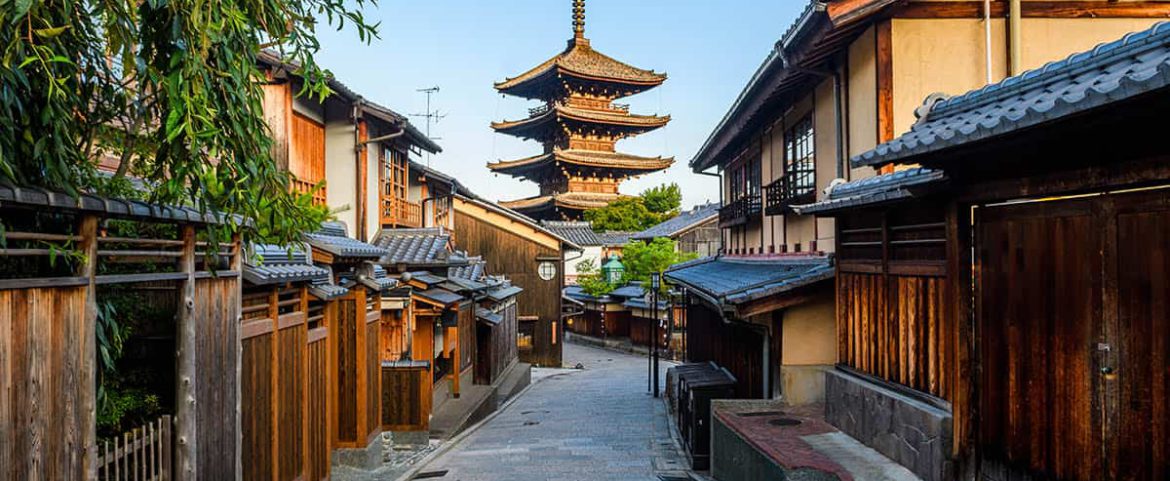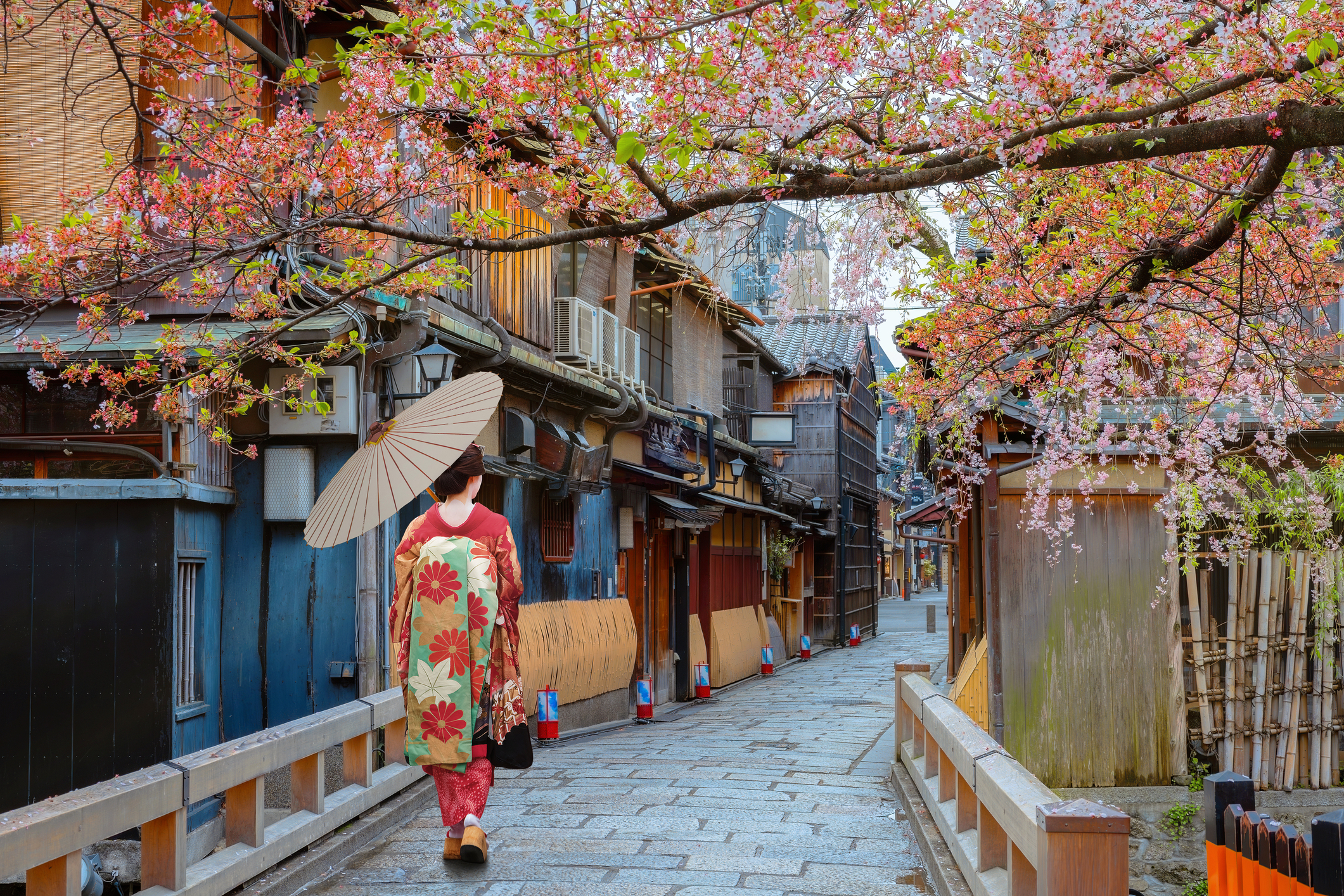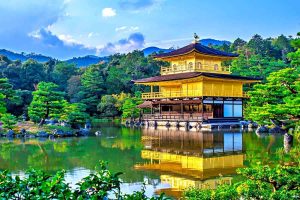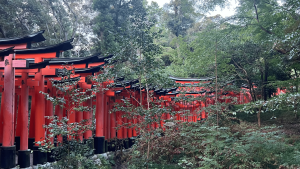How to Get from Kyoto to Gion District
Ever found yourself standing in Kyoto Station, wondering how to get from Kyoto to Gion District without getting lost or wasting time? You’re not alone. Many travelers arrive in Kyoto excited to explore the charm of Gion—the city’s most iconic geisha district—only to find the transportation options a bit confusing. But don’t worry. In this guide, I’ll walk you through everything you need to know to get from Kyoto to Gion District easily, affordably, and stress-free.
Whether you’re traveling solo, with friends, or as a family, this article will help you choose the best way to reach Gion, based on your budget, time, and style of travel.
Where Exactly is the Gion District in Kyoto?
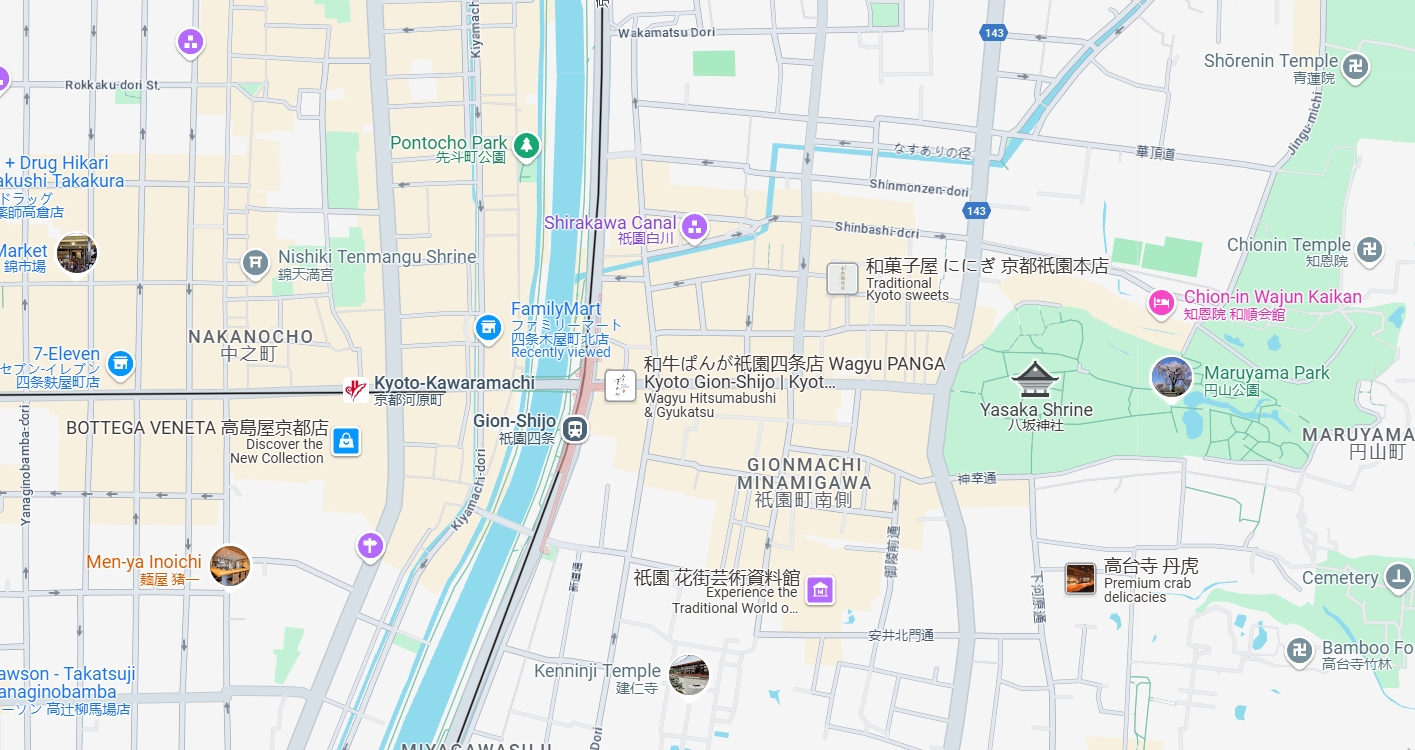
Let’s start with a bit of orientation. The Gion District is nestled on the eastern side of Kyoto, straddling the area between the Kamo River and the Higashiyama mountains. It’s one of the most picturesque and culturally rich areas in the city, where cobblestone streets, wooden tea houses, and lantern-lit alleyways transport you back in time. Think of it as the beating heart of traditional Kyoto.
Gion is most famous for its geiko (Kyoto’s term for geisha) and maiko (apprentice geisha), who gracefully walk through the streets in the evenings. But beyond that, it’s also home to some of the city’s top cultural attractions, including Yasaka Shrine, Hanamikoji Street, and countless traditional restaurants and shops.
So, whether you’re heading from Kyoto Station, your hotel, or another part of the city, knowing how to get from Kyoto to Gion District efficiently will make your journey smoother and much more enjoyable.
Best Ways to Get from Kyoto to Gion District
Now that you know where you’re headed, let’s break down the different ways to get from Kyoto to Gion District. I’ve personally tried all of these options during my visits, and each has its pros and cons depending on your schedule, travel style, and even the weather.
Option 1: Take the Train – Fast and Efficient
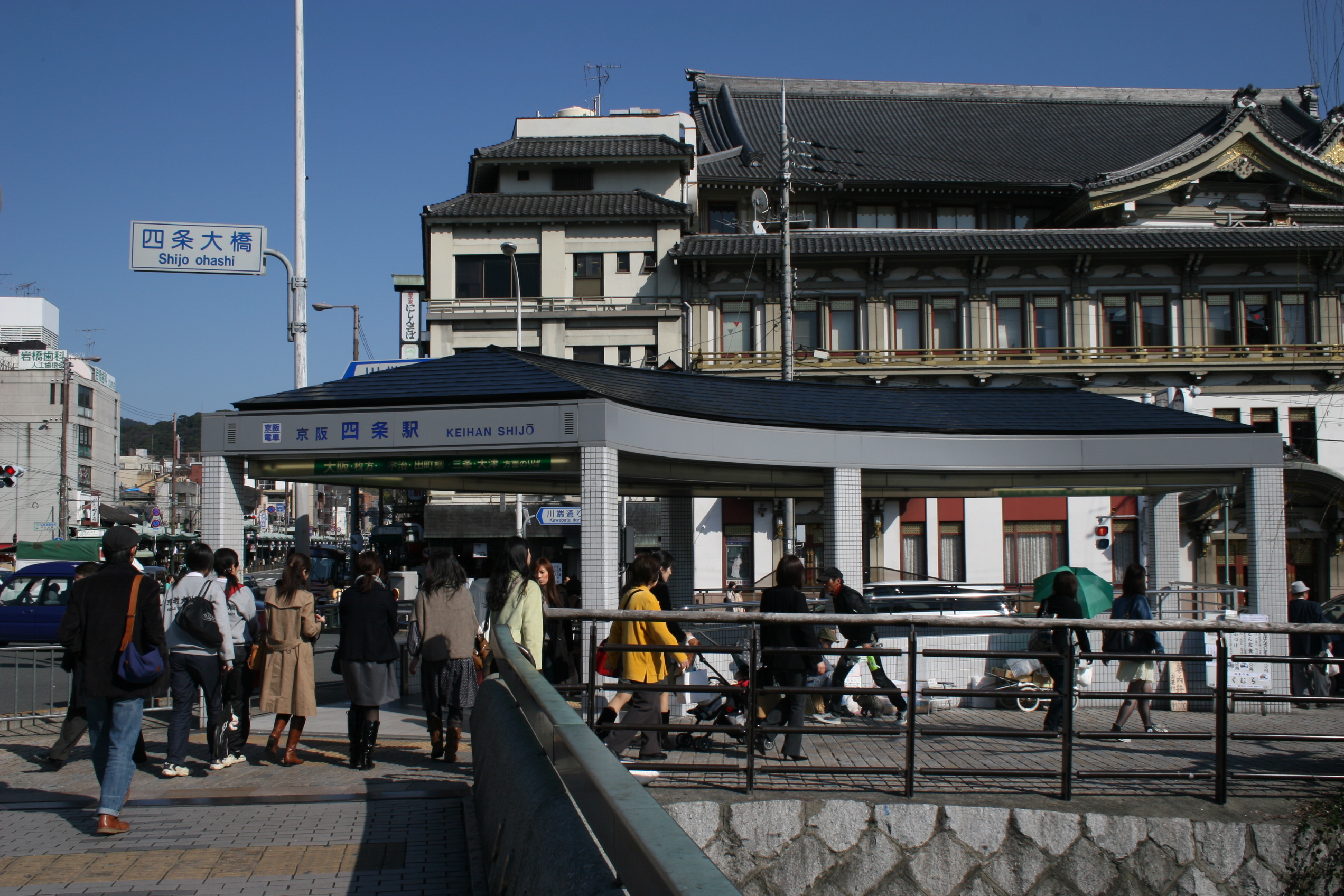
If you’re all about speed and reliability, taking the train from Kyoto to Gion District is hands-down your best bet. Kyoto’s public transit system is known for its punctuality, and this route is especially straightforward.
Here’s how to do it:
- Start at Kyoto Station and head to the JR Nara Line platform.
- Take a train to Tofukuji Station (just one stop).
- At Tofukuji, transfer to the Keihan Main Line.
- Ride the Keihan Line northbound and get off at Gion-Shijo Station.
From Gion-Shijo Station, it’s a short 5-minute walk into the heart of the Gion District. You’ll immediately feel the shift in atmosphere—modern Kyoto melts away, and the timeless charm of old Japan welcomes you.
- Travel time: Around 10–15 minutes
- Cost: About $2 (or ¥210)
- Pros: Fast, affordable, reliable
- Cons: Minor transfer at Tofukuji might confuse first-timers
This route is especially handy if you’re using an IC card like ICOCA or Suica, which lets you tap in and out without worrying about buying tickets each time. While this option isn’t covered entirely by the Japan Rail Pass (Keihan Line isn’t JR), the low cost still makes it worthwhile.
Option 2: Hop on the Bus – Scenic but Slower
If you prefer seeing the city from above ground and don’t mind a slower pace, the Kyoto City Bus is another solid way to get from Kyoto to Gion District. It’s budget-friendly and offers a more scenic ride through the city’s central districts.
Here’s how it works:
- Exit Kyoto Station via the Central (Karasuma) Exit.
- Head to the bus terminal right outside the station.
- Look for Bus #100 or #206—both will take you directly to the Gion stop.
- Ride the bus for about 20–30 minutes, depending on traffic.
- Get off at the “Gion” bus stop, which drops you right next to Yasaka Shrine.
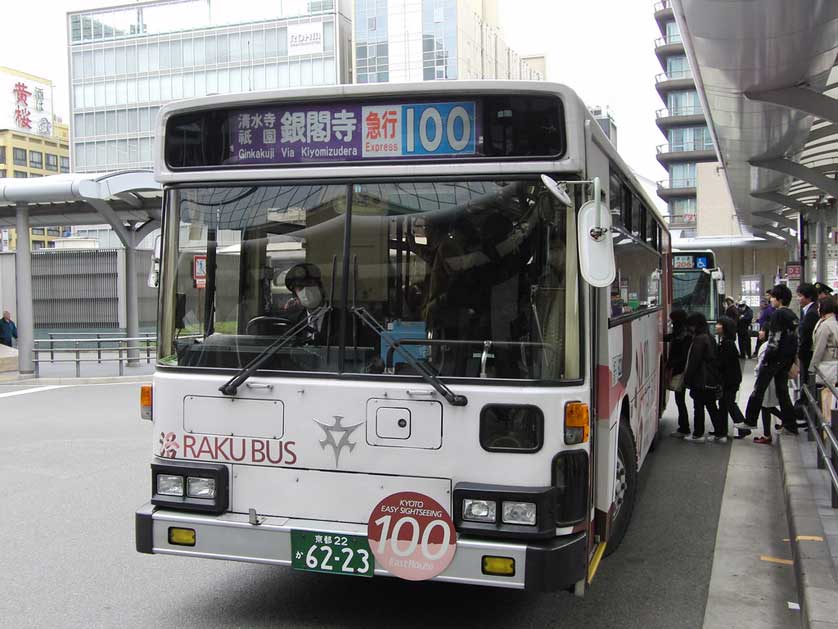
The buses are clearly marked in English, and digital signs inside will tell you which stop is next, so you don’t need to worry about getting lost.
- Travel time: 20–30 minutes
- Cost: Around $2.50 (flat fare)
- Pros: Direct route, no transfers, good views
- Cons: Delays during rush hour or festivals
If you’re visiting during peak travel season (like cherry blossom time or Gion Matsuri in July), the bus can get really crowded. But on quieter days, it’s a pleasant way to ease into Kyoto’s slower rhythm.
Travel tip: If you’re planning to use buses more than three times in one day, grab a Kyoto City Bus Day Pass for about $6. It pays for itself quickly.
Option 3: Take a Taxi – Comfort Comes at a Price
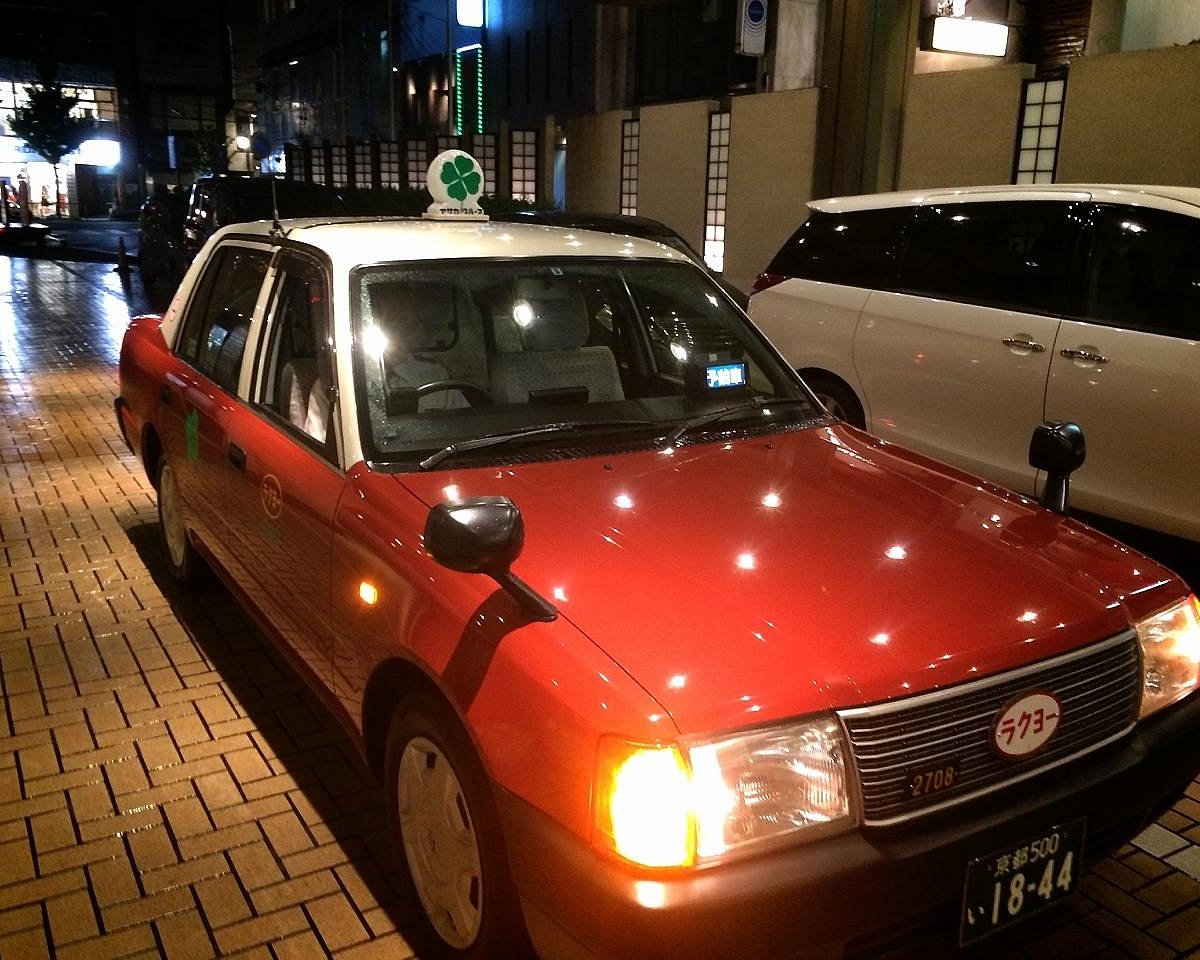
Maybe you’re carrying heavy luggage. Maybe it’s raining. Or maybe, you’re just not in the mood to figure out public transport. In any of those cases, a taxi from Kyoto to Gion District is a comfortable and practical option.
Taxis are easy to find at Kyoto Station—just head to the taxi stand near the Central Exit. Most drivers are used to tourists and will know where “Gion” is if you say it clearly. If you have a specific destination like a ryokan or a restaurant, have the name and address written down in Japanese just in case.
- Travel time: Around 15–20 minutes
- Cost: $15–$20, depending on traffic and time of day
- Pros: Direct, comfortable, no stress
- Cons: More expensive than public transport
This is a great choice if you’re traveling with others and can split the fare, or if you’re arriving in the evening and want to go straight to your accommodation.
Option 4: Walk or Cycle – For the Adventurous Traveler
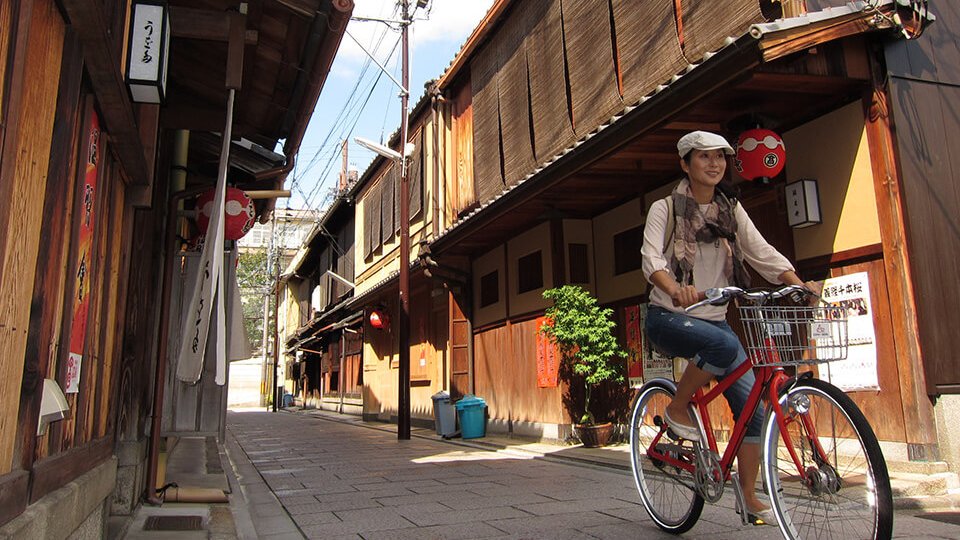
Yes, you can actually walk from Kyoto Station to Gion District if you’re up for a bit of exercise. It’s about 2.5 miles (4 km), and the walk takes around 35–40 minutes depending on your pace. You’ll pass through some interesting neighborhoods and maybe even stumble across some hidden gems along the way.
Alternatively, you can rent a bicycle from one of the many rental shops near Kyoto Station. Kyoto is a very bike-friendly city, and the route from Kyoto to Gion District is mostly flat.
- Walking time: 35–40 minutes
- Cycling time: About 20 minutes
- Cost: Free for walking / ~$5 for bike rental
- Pros: Scenic, flexible, good exercise
- Cons: Not ideal in bad weather or with luggage
If you choose this option, I recommend using Google Maps for directions and stopping at a café or park along the way to break up the journey.
Which Way is Best from Kyoto to Gion District?
Now that we’ve explored all the transport options, let’s lay them out side by side. If you’re still unsure how to get from Kyoto to Gion District, this table makes it easy to compare travel time, cost, comfort, and availability.
| Method | Travel Time | Costing | Comfort Level | Availability |
| Train | 10–15 minutes | ~$2 | ★★★☆☆ | Frequent (every 5–10 min) |
| Bus | 20–30 minutes | ~$2.50 | ★★☆☆☆ | Frequent but affected by traffic |
| Taxi | 15–20 minutes | ~$15–$20 | ★★★★☆ | Always available |
| Walk/Bike | 20–40 minutes | Free / ~$5 | ★★☆☆☆ | Always available |
So what’s the verdict?
- If you’re short on time and want the fastest route from Kyoto to Gion District, go by train.
- If you’re in the mood for a slow ride through the city and don’t mind crowds, try the bus.
- For comfort and convenience, especially with luggage or kids, nothing beats a taxi.
- And if you’re feeling adventurous, explore on foot or by bike—it’s a great way to stumble across local gems.
No matter which route you choose, all roads from Kyoto to Gion District offer a unique experience. It just depends on how you want to start your Gion adventure.
What to See When You Arrive in Gion
Now that you’ve arrived from Kyoto to Gion District, it’s time to explore! Gion is one of those places where the journey is only half the magic—the real charm begins the moment you step into its timeworn streets.
Here are a few of my personal favorite spots in Gion that you absolutely shouldn’t miss:
1. Hanamikoji Street
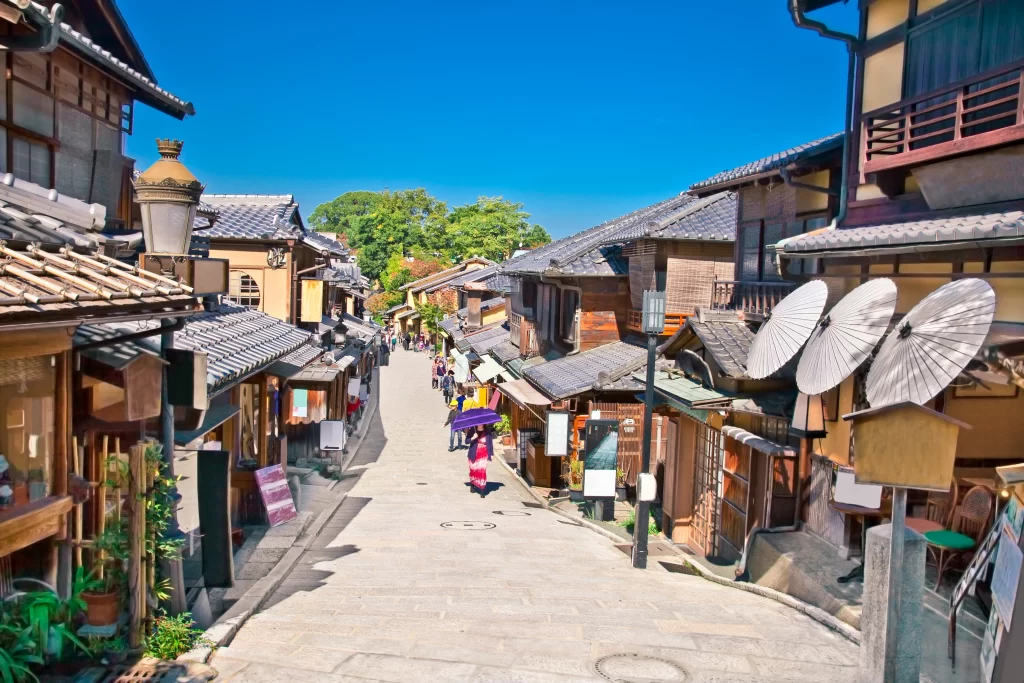
If you’ve seen photos of Gion—narrow cobblestone lanes flanked by wooden teahouses, lanterns glowing softly in the dusk—it was probably taken here. Hanamikoji is the iconic main street of the Gion District, and it captures everything you imagine Kyoto to be.
In the early evenings, you might spot a real-life maiko (apprentice geisha) shuffling gracefully between appointments. Just remember to be respectful: no flash photography, and definitely no chasing them down the street!
Pro tip: Visit just after sunset. The warm light makes the entire area look like a painting.
2. Yasaka Shrine
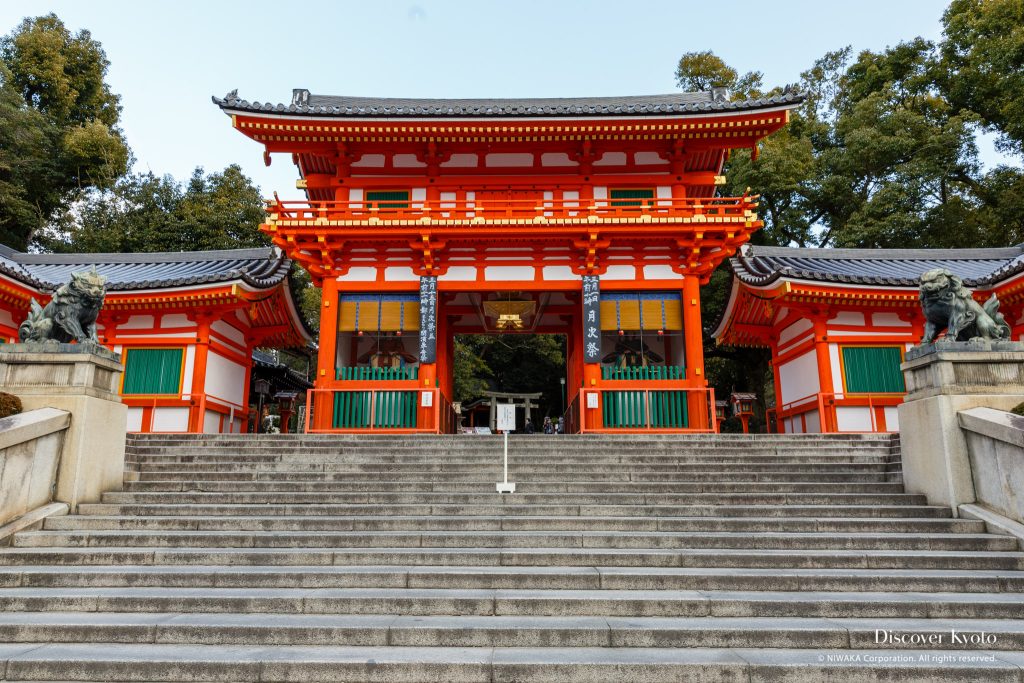
This shrine is more than just a backdrop—it’s a spiritual and cultural anchor of Gion. Open 24/7 and free to enter, Yasaka Shrine is a popular spot for both tourists and locals. It’s especially beautiful during cherry blossom season and at night when the lanterns are lit.
The shrine also plays a starring role during Gion Matsuri, one of Japan’s most famous summer festivals. If your visit lines up with July, you’re in for a real treat.
3. Maruyama Park
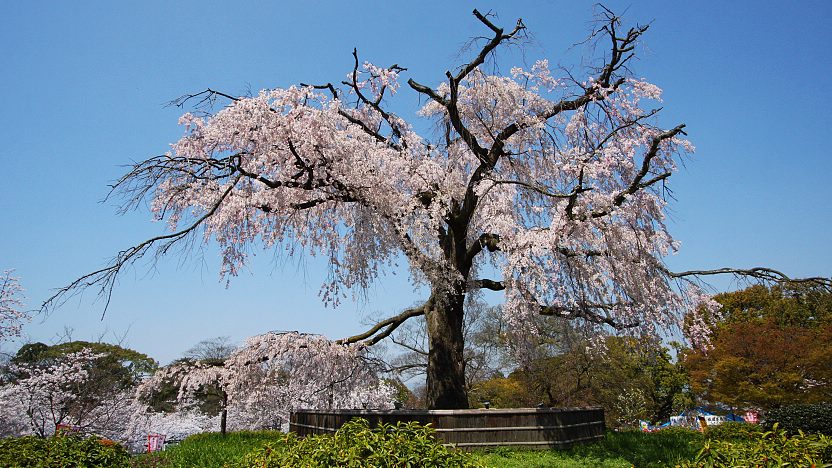
Located just behind Yasaka Shrine, this lush, green space is perfect for a break from sightseeing. In spring, the park becomes one of the city’s best cherry blossom viewing spots, especially with its weeping cherry tree illuminated at night.
Bring a snack, find a bench, and watch the world go by. It’s a quiet contrast to the busy streets nearby and a perfect breather after your journey from Kyoto to Gion District.
4. Gion Corner
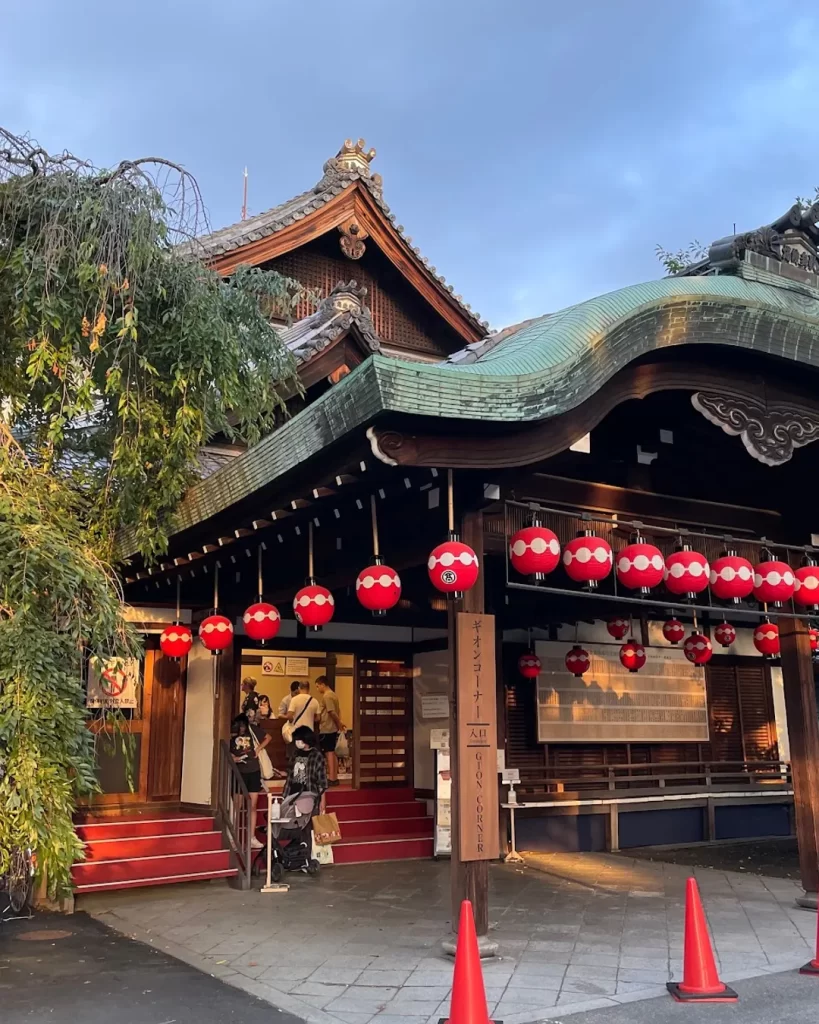
If you want a crash course in Japanese traditional arts without running around town, head to Gion Corner. This small theater presents short performances of everything from tea ceremony and ikebana (flower arranging) to kyo-mai (Kyoto-style dance) and bunraku (puppet theater).
Shows are about an hour long and very foreigner-friendly, with English explanations. It’s a fantastic way to deepen your appreciation for Kyoto’s cultural scene.
Tips for Navigating Gion Once You Arrive
Getting from Kyoto to Gion District is just the start. Once you’re here, you’ll want to make the most of your time, and knowing a few local tips will help you avoid common hiccups.
1. Bring Comfortable Shoes
Gion is best explored on foot, and many of its streets are paved with old stone or have uneven surfaces. Wear shoes that can handle cobblestones without killing your feet.
2. Be Respectful of Local Culture
It’s tempting to get excited when you see a geiko or maiko, but please respect their privacy. Don’t block their way for photos or follow them down alleys. Many locals are becoming frustrated with the lack of manners from visitors, and some streets now have signs asking tourists to behave respectfully.
3. Download Helpful Apps
Before you leave Kyoto Station, download apps like Google Maps or Navitime for Japan. They’ll help you track buses, train schedules, and even walking routes to get from Kyoto to Gion District and beyond.

If you’re using the bus, the Kyoto City Bus & Subway App is another great tool for route planning.
4. Use an IC Card
IC cards like ICOCA, Suica, or PASMO are your best friend in Kyoto. You can use them on buses, trains, and even to pay at convenience stores. Just tap in and tap out—no fumbling for coins or tickets.
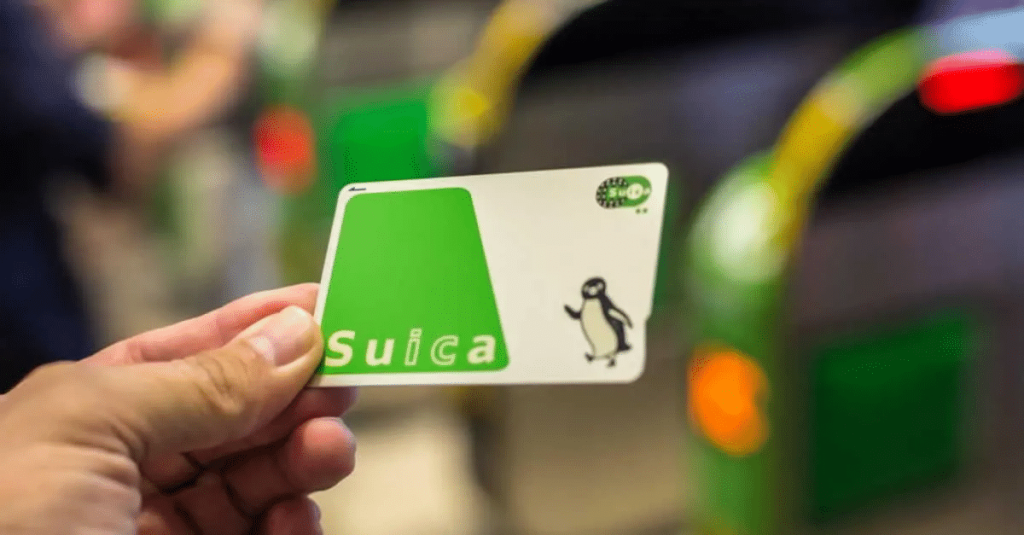
You can buy and recharge these cards at major train stations like Kyoto Station. If you’re planning more travel in Japan, they’ll also work in cities like Osaka and Tokyo.
5. When in Doubt, Ask for Help
Kyoto is a tourist-friendly city, and staff at stations and transport hubs are usually happy to help if you’re confused. Just have the name “Gion” written in English or Japanese, and someone will point you in the right direction.
When’s the Best Time to Visit Gion?
You’ve made it from Kyoto to Gion District—but when should you go to soak in all its beauty?
- Morning: Quiet streets, perfect for photography without the crowds
- Afternoon: Bustling with tourists and open shops
- Evening: Magical time to stroll and maybe spot a geiko heading to work
Each season brings its own charm. Spring means cherry blossoms in Maruyama Park, summer lights up the streets with Gion Matsuri, autumn wraps the area in golden hues, and winter offers a peaceful, less crowded experience.
FAQs: Everything You’re Wondering About the Journey from Kyoto to Gion District
Still got a few lingering questions? Here are some of the most common ones I’ve been asked while helping friends and fellow travelers explore Kyoto.
Can I use the Japan Rail Pass to get from Kyoto to Gion District?
Partially, yes. You can use the JR Pass on the JR Nara Line from Kyoto Station to Tofukuji Station. However, the Keihan Line that takes you from Tofukuji to Gion-Shijo is not part of the JR network, so you’ll need to pay a small fare (about ¥210) separately. Even with the added cost, this is one of the quickest ways to travel from Kyoto to Gion District.
Is it safe to walk from Kyoto Station to Gion?
Absolutely. Kyoto is one of the safest cities in the world, and walking from Kyoto to Gion District is a lovely way to experience more of the city. You’ll pass through interesting neighborhoods and maybe even discover some lesser-known temples or cafes on the way. Just remember that it takes about 35–40 minutes, so wear comfy shoes and check the weather first.
What’s the last train or bus back to Kyoto Station from Gion?
Most trains on the Keihan Line run until around midnight, but schedules may vary slightly by day. If you’re planning to head back late after dinner or a cultural show, check the last departure times at Gion-Shijo Station or use a navigation app to stay on top of it.
Kyoto City buses usually stop running around 10:00 PM, though some routes have reduced service later in the evening. If you’re out past that time, a taxi is your best bet to return from Gion District to Kyoto Station.
Can I bring luggage to Gion?
While there are no strict rules against it, Gion’s narrow walkways and traditional atmosphere don’t mix well with rolling suitcases. If you’re heading straight from Kyoto to Gion District with your bags, consider leaving them in a coin locker at Kyoto Station. There are also luggage delivery services if you’re heading to a hotel or ryokan in Gion.
Making Your Journey from Kyoto to Gion District a Breeze
Let’s wrap things up with some final tips to help you travel smarter from Kyoto to Gion District and make the most of your time in one of Japan’s most iconic neighborhoods.
Use an IC Card
Get an ICOCA, Suica, or PASMO card at Kyoto Station. These reloadable IC cards let you travel seamlessly across trains and buses without buying a ticket every time. They can also be used at convenience stores and vending machines. IC cards don’t give you a discount on the fare from Kyoto to Gion District, but they do make life a lot easier.
Travel Outside Rush Hours
Kyoto can get crowded, especially during peak travel seasons like spring and autumn. If possible, travel from Kyoto to Gion District in the late morning or early afternoon. Avoid the 8:00–9:00 AM and 5:00–7:00 PM windows, when local commuters pack the trains and buses.
Book Restaurants in Advance
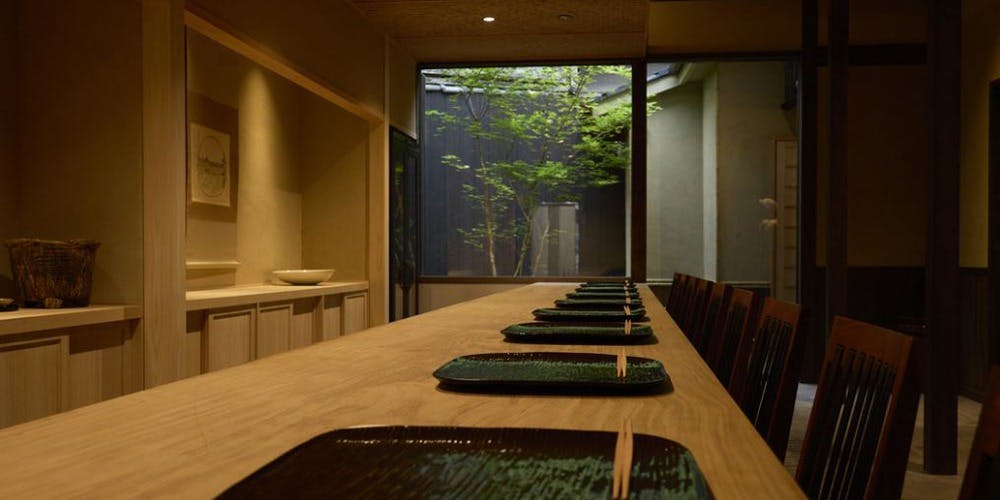
Gion is home to some incredible restaurants—from Michelin-starred kaiseki dining to cozy yakitori spots. Many places require reservations, especially if you want to try a more traditional experience. Book ahead, or ask your hotel concierge to help you with the reservation.
Be Respectful and Curious
Lastly, Gion is not just a tourist destination—it’s a living neighborhood. While you’re strolling through its atmospheric streets, keep your voice down, don’t touch the wooden facades of the teahouses, and resist the urge to follow or photograph geiko without permission. Traveling from Kyoto to Gion District isn’t just about moving between two places—it’s about crossing into a culture that’s been carefully preserved for centuries.
The Journey is Part of the Magic
Traveling from Kyoto to Gion District isn’t just about checking off a landmark—it’s about experiencing the transition from modern Japan to its beautifully preserved past. Whether you hop on a train, ride a scenic bus, grab a cab, or wander on foot, every route offers its own charm and little discoveries along the way.
When you finally step into Gion and hear the clip-clop of wooden sandals, see the glow of lanterns, and smell freshly grilled street snacks wafting through the air—you’ll know it was worth every step.
So pack your sense of wonder, choose your route from Kyoto to Gion District, and get ready to explore the most enchanting neighborhood Kyoto has to offer.
